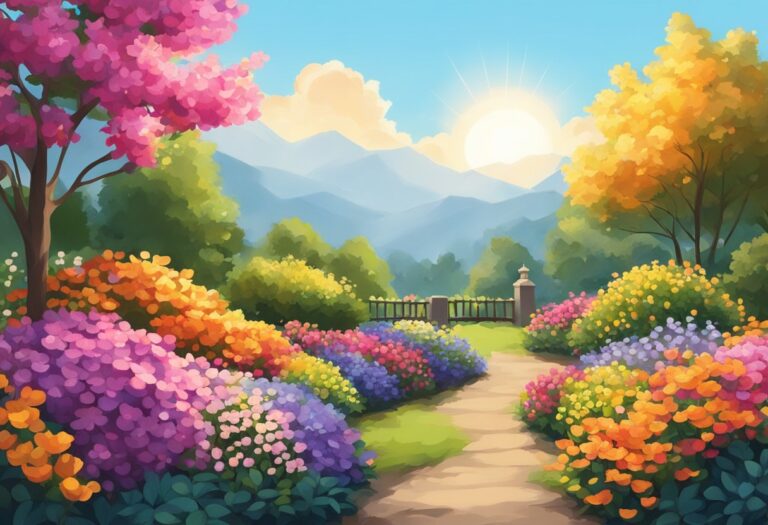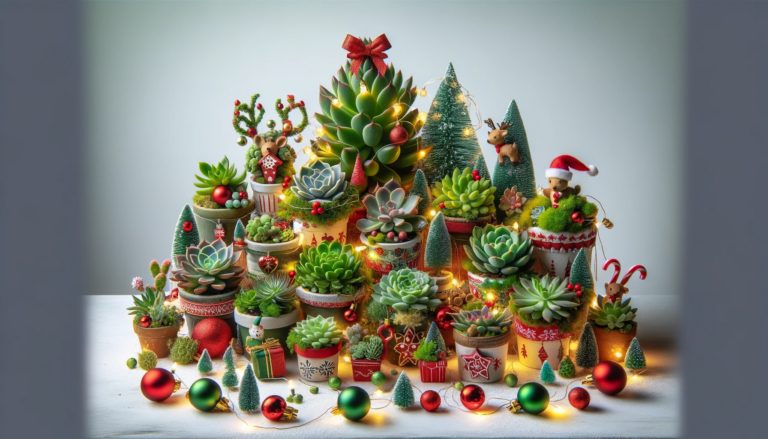Succulent Design and Arrangement Ideas
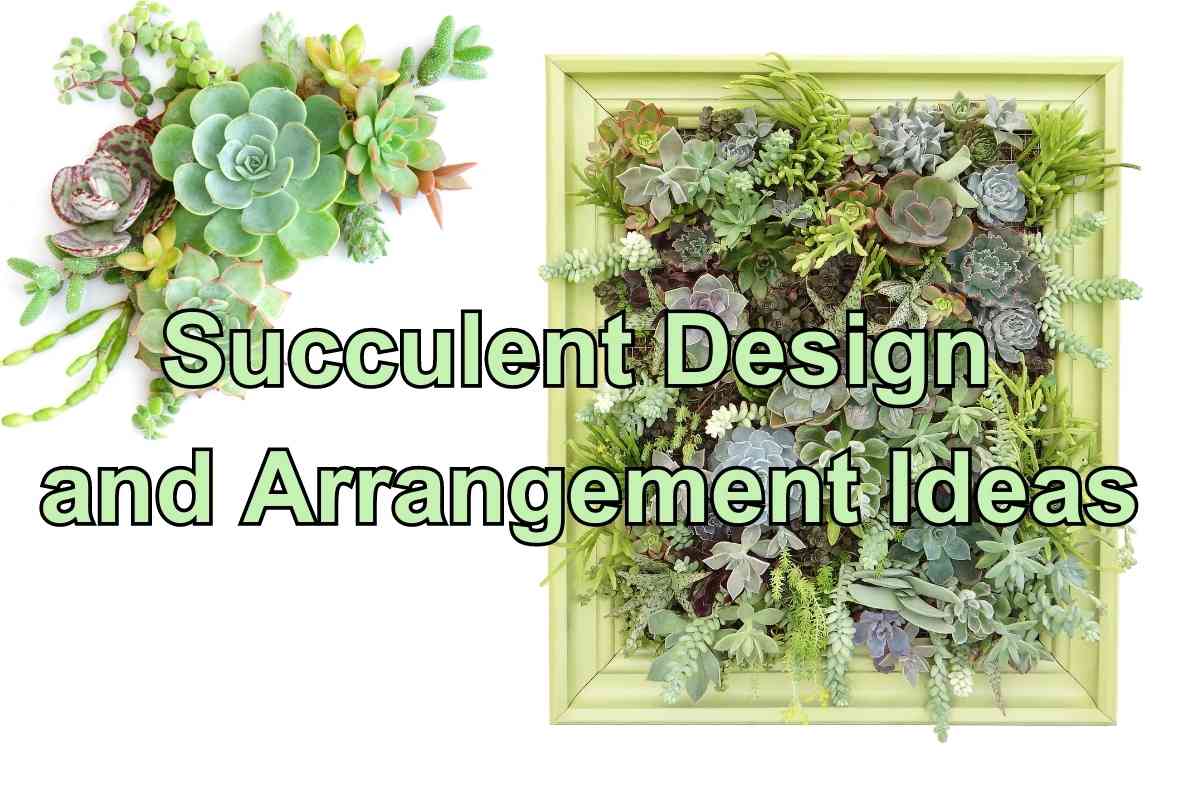
Succulents are lovely in their own little pots. I’ve got nothing against it.
But there’s just something about putting together a gorgeous succulent design or arrangement and watching it grow and thrive.
Whether you arrange a planter, garden bed, rock garden, fairy garden, wreath, or anything else you can come up with; succulents make it easy to be creative. These are some of my favorite succulent design and arrangement ideas to help you get started.
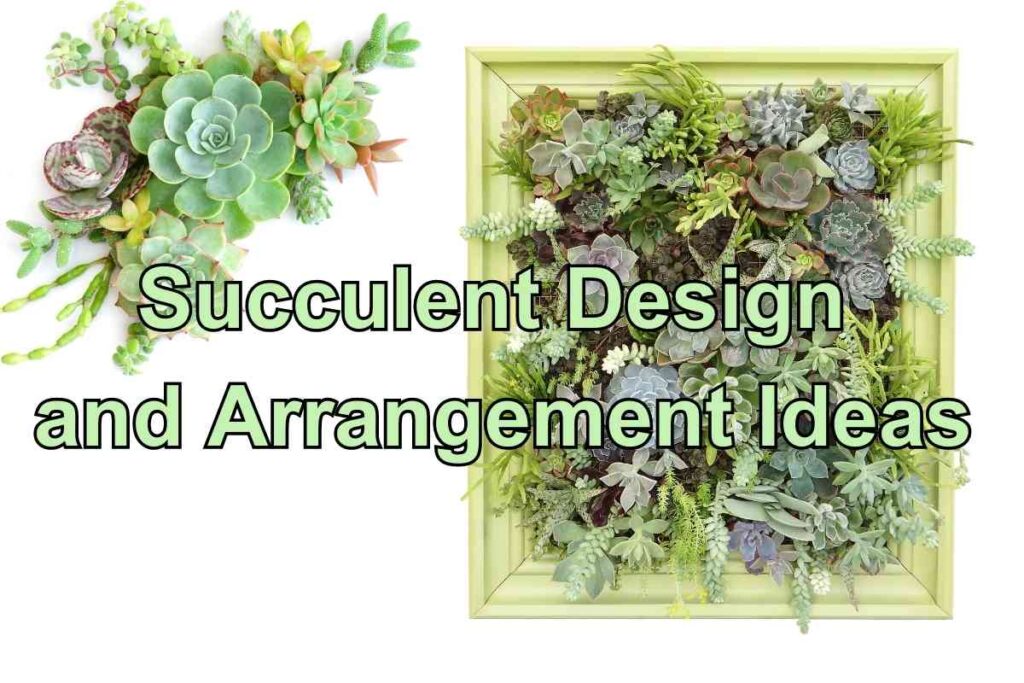
From choosing the right succulents for the arrangement you want to make, to all the arrangement ideas you can imagine, here’s what you need to know to design gorgeous succulent arrangements.
Summary
- Succulents are great in their own pots, but arranging them creatively is more fun.
- Outdoor garden succulents that do well include Echeveria, Sempervivum, Sedum, Crassula, Agave, Aeonium, Senecio, Graptopetalum, and Kalanchoe.
- Planting a single species in mass creates a cohesive and visually impactful landscape.
- Using rocks intelligently in succulent arrangements provides visual effects and helps with soil drainage.
- Combining succulents, cacti, and other plants creates striking contrasts and extends the period of interest in the landscape.
- If the soil is not suitable, consider creating a raised succulent garden bed or using a rock garden.
- Decorating ideas with succulents include hanging terrariums, wreaths, wall art, teacup gardens, book planters, fairy gardens, centerpieces with fairy lights, pots with painted designs, and succulent bonsai.
- Artificial succulents can be used for low-maintenance decoration and offer endless possibilities for creative arrangements.
- Regularly clean artificial succulents to maintain their fresh appearance.
- Succulents offer versatility and the opportunity for unique creations both indoors and outdoors.
Succulent Design and Arrangement Ideas in the Garden
Best Succulents to Plant Outside
I’ll be honest, when I got started planting succulents outside, I just sacrificed a few of my extra succulents to the yard to see what would happen. It was too much fun to propogate my succulents so I ended with WAY too many.
My climate only has light frosts, so a surprising number of succulents pulled through, but I quickly learned that it was better to choose succulents well-suited to life outdoors, like these:

Echeveria
Echeverias are popular succulent plants with rosette-shaped leaves and vibrant colors. They thrive in outdoor gardens due to their ability to withstand full sun exposure.
They have thick leaves that store water, making them drought-tolerant and suitable for dry climates. Echeverias also produce beautiful flower spikes that add an extra touch to the garden.
Sempervivum (Hens and Chicks)
Sempervivums are small succulents that form tight rosettes of fleshy leaves. They are known as “Hens and Chicks” because the main plant (hen) produces smaller offsets (chicks) around it.
These succulents do well in outdoor gardens due to their hardiness and ability to tolerate various weather conditions. They can survive in cold climates, as well as endure heat and drought. Sempervivums also have a wide range of color variations, adding visual interest to the garden.

Sedum (Stonecrop)
Sedums are versatile succulents that come in many different varieties, including trailing, groundcover, and upright forms. They thrive in outdoor gardens due to their low maintenance requirements and ability to tolerate different soil types.
Sedums are generally hardy and can withstand cold temperatures. They have leaves that store water, enabling them to survive in dry conditions. Sedums also produce attractive flowers that attract pollinators to the garden.
Crassula (Pigmyweed)
Crassulas are diverse succulents that vary in size, leaf shape, and growth habit. They do well in outdoor gardens because they are generally drought-tolerant and can handle full sun exposure.
Crassulas are easy to grow and require minimal care, making them suitable for beginners. Many species produce clusters of small flowers, adding beauty to the garden.
Agave
Agaves are large succulents known for their dramatic rosette-shaped leaves and architectural presence. They thrive in outdoor gardens due to their ability to tolerate hot and arid climates.
Agaves are highly drought-resistant and can withstand prolonged periods without water. They are also resilient to pests and diseases. The unique leaf structure and impressive size of agaves make them great focal points in garden landscapes.
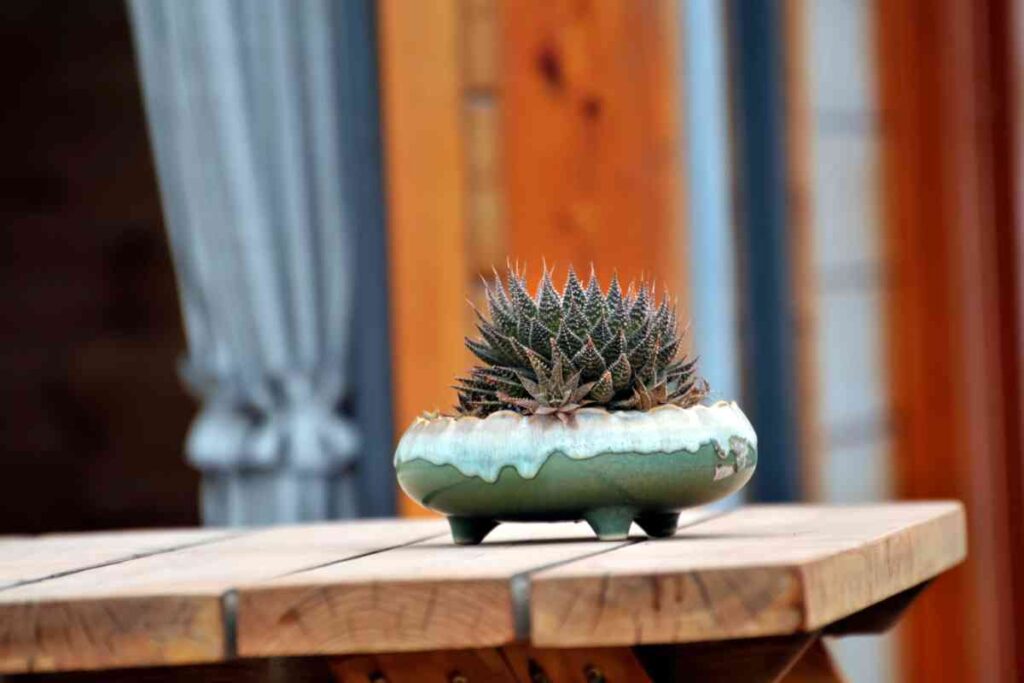
Aeonium
Aeoniums are striking succulents characterized by rosettes of fleshy leaves that can vary in color and form. They thrive in outdoor gardens due to their preference for mild climates with cool summers.
Aeoniums can handle partial shade but also tolerate full sun, depending on the species. They are relatively drought-tolerant but benefit from occasional watering. Aeoniums’ unique leaf arrangements and color variations make them visually appealing in garden landscapes.
Senecio
Senecios encompass a large genus of succulents with diverse growth habits, including trailing, creeping, and upright forms. They do well in outdoor gardens due to their adaptability and ability to tolerate different growing conditions.
Senecios are generally drought-tolerant and can thrive in full sun. They often have showy flowers that attract pollinators. Senecios’ trailing varieties are particularly suitable for hanging baskets or cascading over walls.
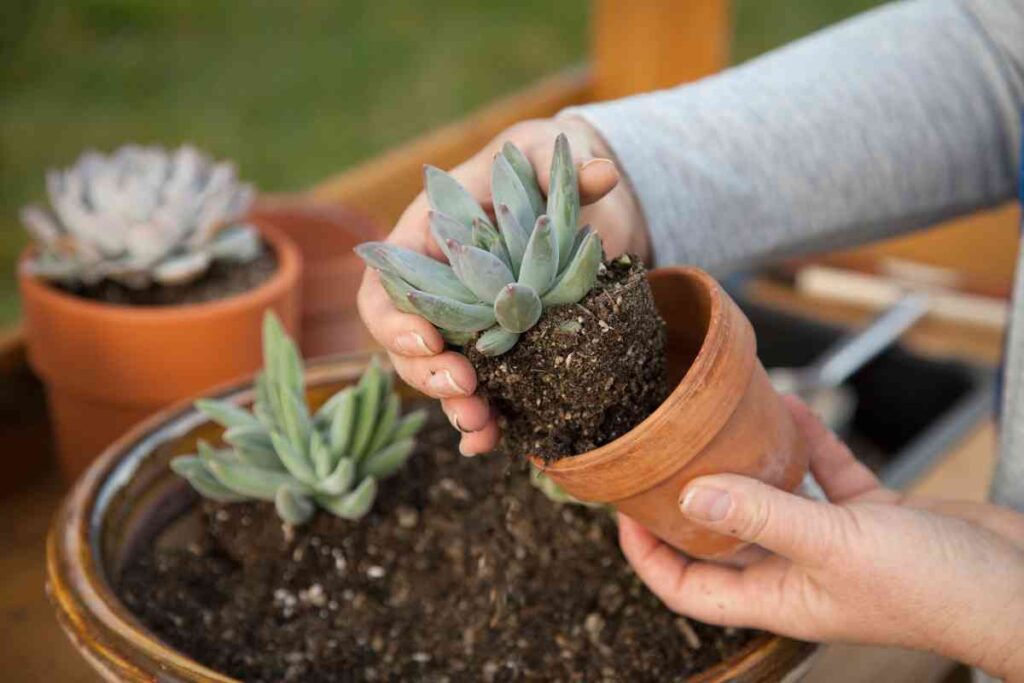
Graptopetalum
Graptopetalum is a genus of succulent plants that typically feature rosettes of thick, fleshy leaves. They do well in outdoor gardens due to their adaptability and low maintenance requirements.
Graptopetalums can tolerate a wide range of conditions, including full sun to partial shade. They are drought-tolerant and can store water in their leaves, enabling them to withstand dry spells. These succulents come in various colors, from pale green to purple, adding visual interest to garden arrangements.
Kalanchoe
Kalanchoe is a diverse genus of succulents known for their vibrant flowers and attractive foliage. They thrive in outdoor gardens due to their ability to tolerate full sun and heat.
Kalanchoes are generally easy to grow and require minimal care. They are also drought-tolerant, making them suitable for dry climates. Kalanchoes produce clusters of colorful blooms that can last for weeks, providing a burst of color to garden landscapes.
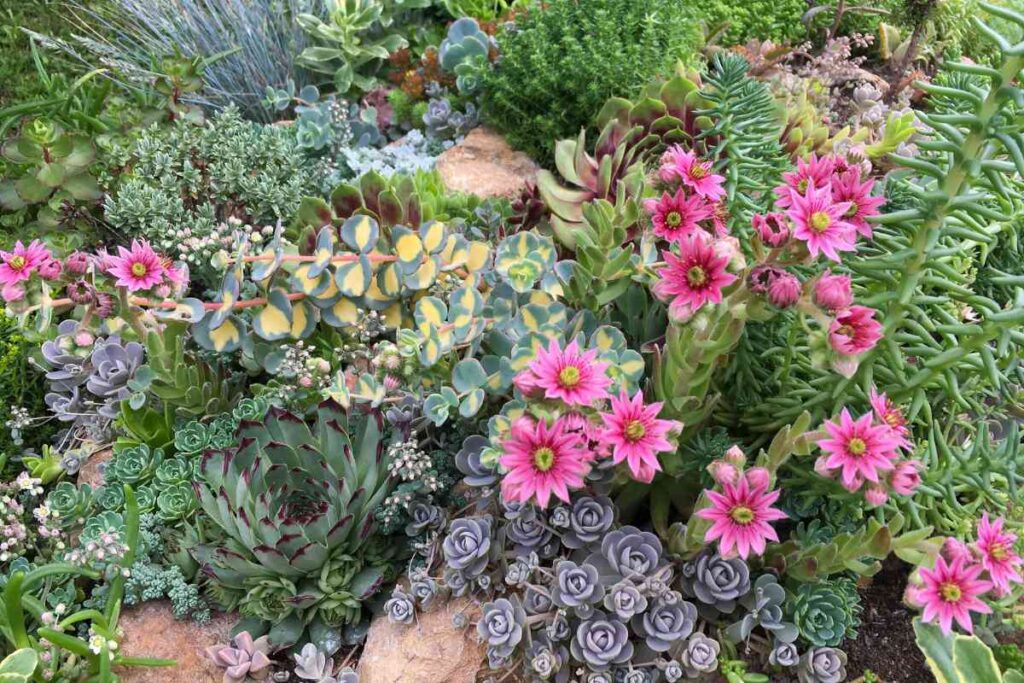
Is your outdoor garden thriving? Try these succulents when you’re ready for a little more challenge for the reward of truly shocking colors.
How to Plant Succulents Outside
Plant in Mass for a Rich Visual Effect
Planting a single species of succulent in mass offers a feeling of richness that’s too often missing from succulent gardens. It also makes the other succulents in the design pop.
By planting a single species of succulent in mass, you can achieve a cohesive landscape with a strong visual impact. The repetition of the same plant throughout the garden creates a sense of unity and harmony.
This approach allows the unique characteristics of the chosen succulent species, such as color, texture, or form, to take center stage and create a visually stunning display. Remember to consider the specific needs of your chosen succulent species and provide the necessary care to ensure their healthy growth.
Select a species of succulent that appeals to you and is well-suited for your climate and growing conditions. It’s nice if it grows quickly too. Popular choices include Echeveria, Sempervivum, or Sedum varieties. Succulents that work well as ground cover tend to work well for this effect.
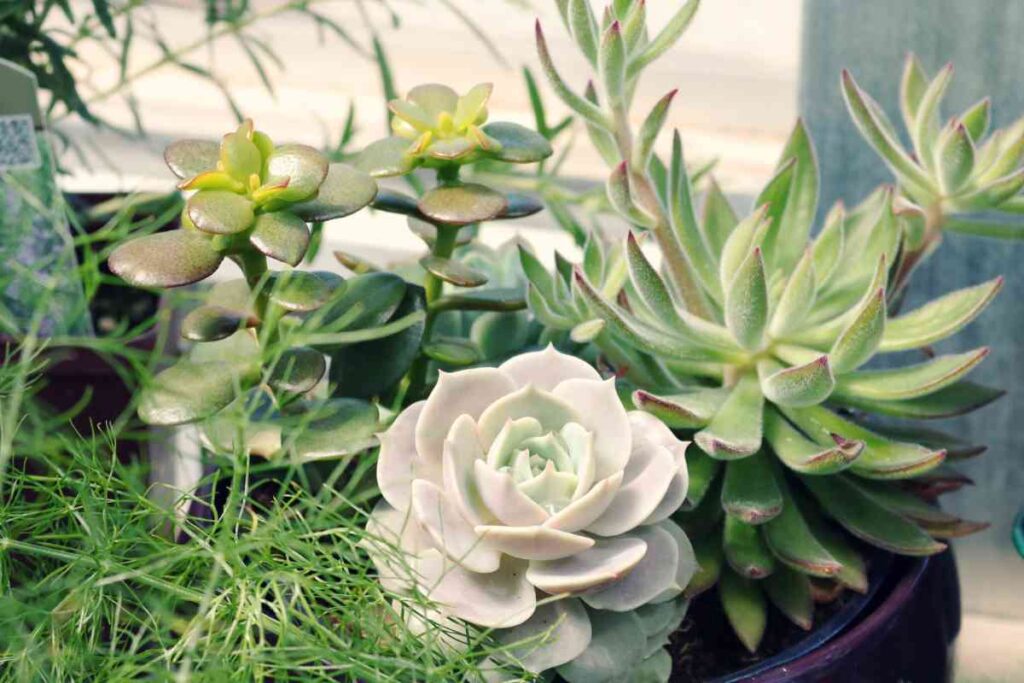
Use Rocks Intelligently
Rocks and succulents go hand and hand. However, you don’t want to just throw some rocks in the landscape and call it a day (as so many succulent gardens do… sigh…)
Using rocks correctly not only adds awesome visual effects, but also can help your succulents to grow better by offering soil retention with great drainage. I could spend all day going on about succulent rock gardens and my many ideas for making them, but here are the basics:
- Choose rocks that are sturdy, durable, and of varying sizes. Look for rocks with interesting shapes, textures, and colors that complement the overall aesthetic you’re going for. Ensure that the rocks are clean and free from any debris or pests.
- Envision how you want the rocks to be positioned within your succulent arrangement. Consider the overall layout and the desired height variation you wish to achieve. Try to think it through now, before you start moving rocks around.
- Position the larger rocks as anchor points. These rocks will provide stability and act as a foundation for the rest of the stacked rocks. Place them strategically within the arrangement to create the desired height variation and focal points.
- Build up height by carefully stacking smaller rocks on top of the larger ones. Fill in soil as you go to look for weak places that need more support.
- Leave gaps or crevices between stacked rocks where you can plant low-growing succulents. These pockets will serve as miniature planting beds within the rock structure. This is how you create the sense of a desert landscape and not just a rock wall.
- Plant intentionally. As you fill in succulents around your rock structure, think about the light they’ll get and how the soil drains. Some succulents are well-suited for the shade behind big rocks, while others will look leggy.
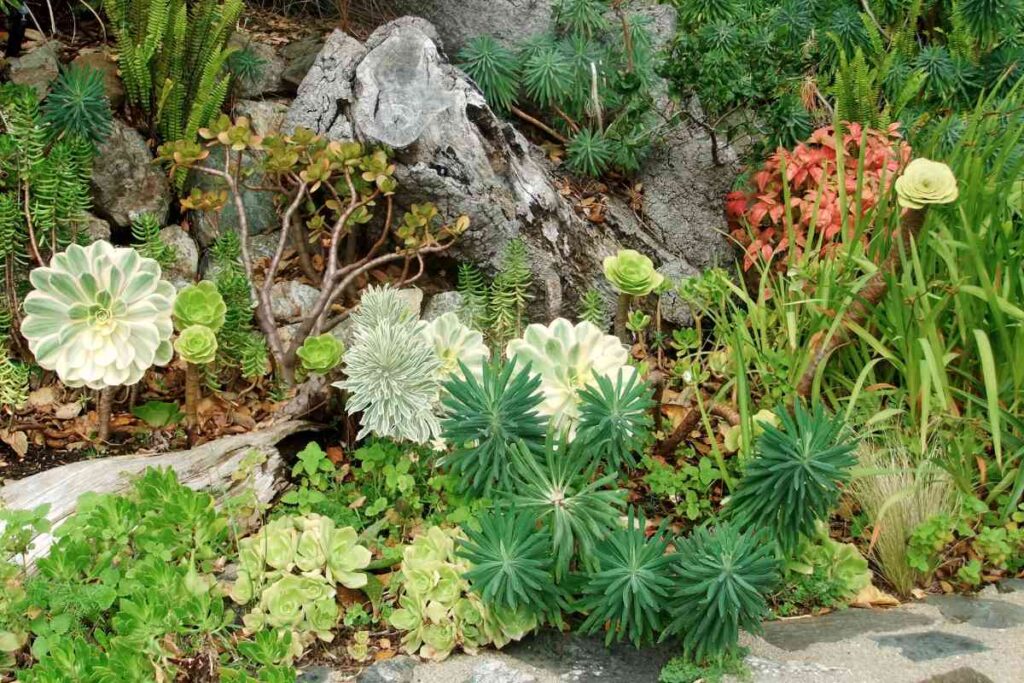
Incorporate Other Plants and Cactus
Combining succulents with taller cacti and ornamental grasses in your landscape can create a striking effect.
Succulents, cacti, and other plants have distinct forms and textures that create a visually striking contrast. Succulents often feature rosettes, plump leaves, or trailing habits, while taller cacti can have columnar, branching, or spiky forms. This contrast adds visual interest and creates a dynamic and diverse landscape.
Succulents have many virtues, but height usually isn’t one of them. Taller cacti provide height variation in your garden design. By incorporating them alongside shorter succulents, you can introduce vertical elements, adding depth and dimension to your landscape. This variation in height creates a visually appealing composition, breaking up the monotony of a flat or uniform layout.
Succulents, cacti, and other plants often have different bloom times and flowering habits. By combining them, you can extend the period of interest in your landscape. Some succulents produce vibrant flowers, while cacti may offer stunning blooms in various colors and shapes. This combination ensures that you have a visually appealing display throughout the year, as different plants take turns showcasing their blooms.
Not only can cacti and succulents be planted together, along with other plants and grasses, but they absolutely should be for the best effect.
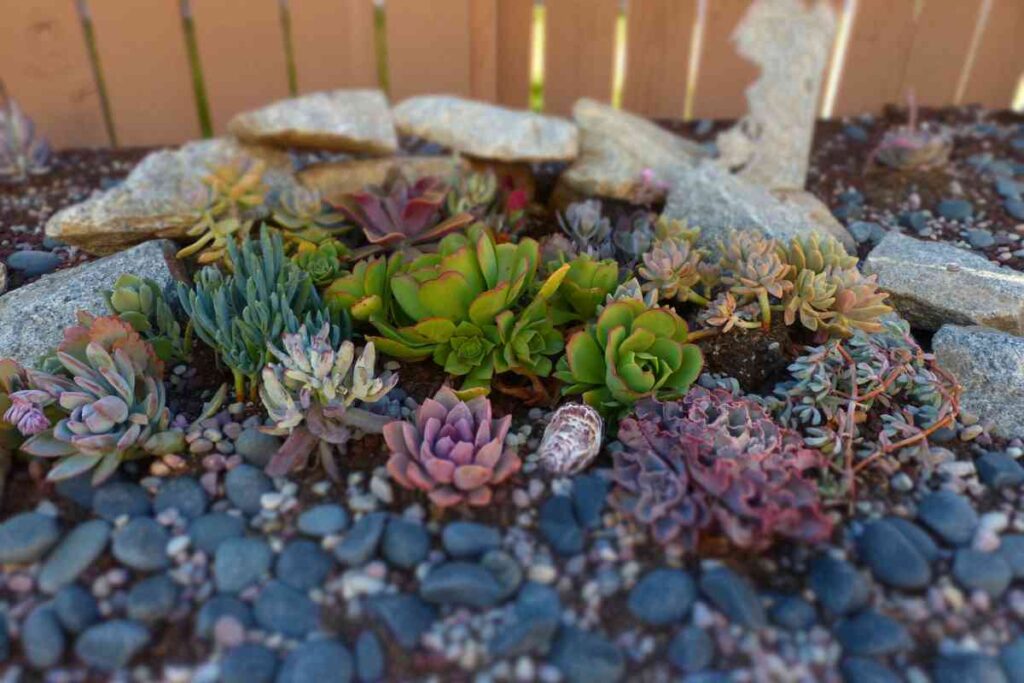
Make a Succulent Garden Bed if Your Soil Isn’t Working
If you’ve been following all of the best tips about how to plant a succulent garden but you’re still not having any success, you may want to consider a raised succulent garden bed.
The most important part about planting succulents in the ground is that the soil is well-draining. If your soil is easily waterlogged, succulents are unlikely to thrive there, even if you amend the soil.
A rock garden can raise the succulents up and provide the needed separation between their soil and the ground. You can also use a classic planting bed, large pots, or a succulent mound.
Decorating: Succulent Design and Arrangement Ideas
I have so many ideas for decorating with succulents that I can literally not contain them all here. It’s so easy to plant lots of different succulents together to make amazing art. The following are some of my favorites, but these succulent decorating ideas will take your creativity to the next level.
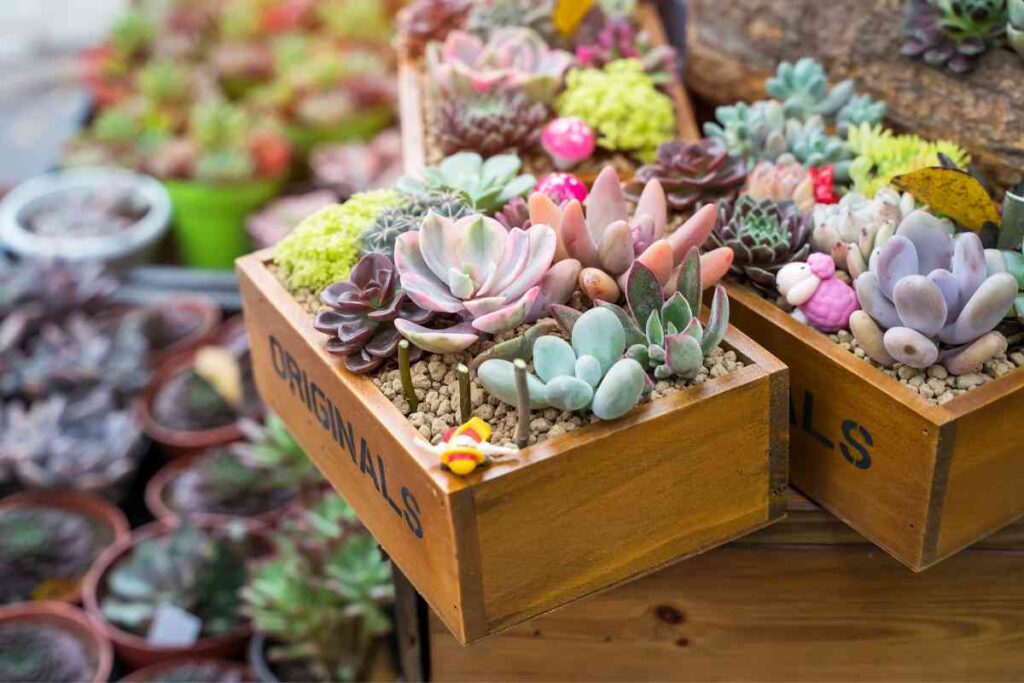
- Hanging Succulent Terrariums: Create mini hanging gardens by filling glass terrariums with an assortment of small succulents. Hang them in windows or from ceilings to add a unique touch to any space. Unless you’re an experienced succulent guru, you may want to do this one with artificial succulents since keeping succulents alive in terrariums is, hmm, challenging, to say the least. Here’s a step-by-step guide with everything you need to know to pull off a hanging terrarium.
- Succulent Wreaths: Design a living succulent wreath by attaching a variety of succulent cuttings to a wire or moss base. Hang it on your front door or use it as a decorative succulent centerpiece.
- Succulent Wall Art: Arrange succulents on a wooden frame or a living wall panel to create a living art piece. These vertical gardens make a stunning focal point indoors or outdoors.
- Succulent Teacup Gardens: Repurpose vintage teacups or coffee mugs by planting small succulents in them. These adorable mini succulent gardens can be displayed on windowsills, shelves, or as table centerpieces.
- Succulent Book Planters: Hollow out old books and transform them into unique succulent planters. Stack them on a shelf or use them as conversation starters on a coffee table.
- Succulent Fairy Gardens: Create enchanting miniature worlds by combining succulents with fairy garden accessories like tiny houses, bridges, and figurines. These whimsical displays can be placed on a tabletop or in outdoor garden beds.
- Succulent Centerpieces with Fairy Lights: Arrange succulents in a shallow container or wooden box and add battery-powered fairy lights for a magical touch. These illuminated succulent table arrangements create a warm and inviting atmosphere.
- Succulent Pots with Painted Designs: Add a personal touch to plain clay pots by painting them with vibrant designs or patterns. Combine them with succulents to create a cheerful and artistic display.
- Succulent bonsai: Sculpt succulents into little trees. These sculptural arrangements can be placed on tabletops or used as decorative accents in outdoor spaces. Jade works insanely well for this.

Love Succulents? It’s ok to Fake it..
Artificial succulents can be a fantastic option for decorating various spaces, offering the beauty and charm of real succulents without the need for ongoing care and maintenance.
Artificial succulents are perfect for adding greenery and a touch of nature to interior spaces (even places without the light to keep a plant alive).
They can be used to create attractive centerpieces on dining tables, coffee tables, or mantels. Place them in decorative pots, bowls, or terrariums to create a visually appealing display. Artificial succulents also work well in office settings, adding a soothing and natural element to workspaces.
One of my favorites is to create stunning wall displays using artificial succulents. Arrange them in frames or shadow boxes to create living wall art. You can also hang them vertically on a wall using specially designed plant panels or wall-mounted planters.
Choose high-quality succulents that closely resemble real succulents. Look for realistic colors, textures, and details that mimic the appearance of live plants.
Regularly clean the artificial succulents to remove dust and keep them looking fresh. There’s nothing like a layer of dust to give you away. With their versatility and low-maintenance nature, artificial succulents offer endless possibilities for creating beautiful and long-lasting decorative arrangements.
Want to know more? Here’s everything you need to know to successfully plant artificial succulents that will look so great nobody will even wonder if they’re real.
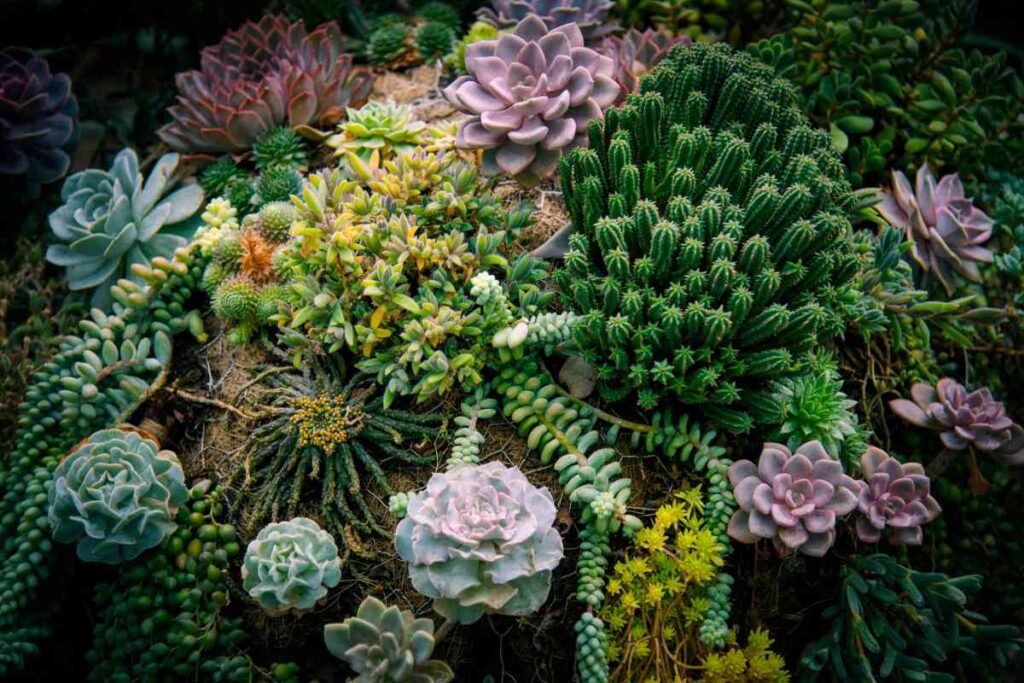
Conclusion
There’s so much you can do with succulents. I know you’re going to love making your own unique creations, just like I do. I hope these succulent design and arrangement ideas help you get started.
If you’re doing a lot of your succulent gardening indoors, be sure to check out this post that covers everything about indoor succulent gardening, from choosing plants, to providing enough light, to getting rid of pests.
Want general tips on caring for all you succulent arrangements, indoors or out? Check this out.


